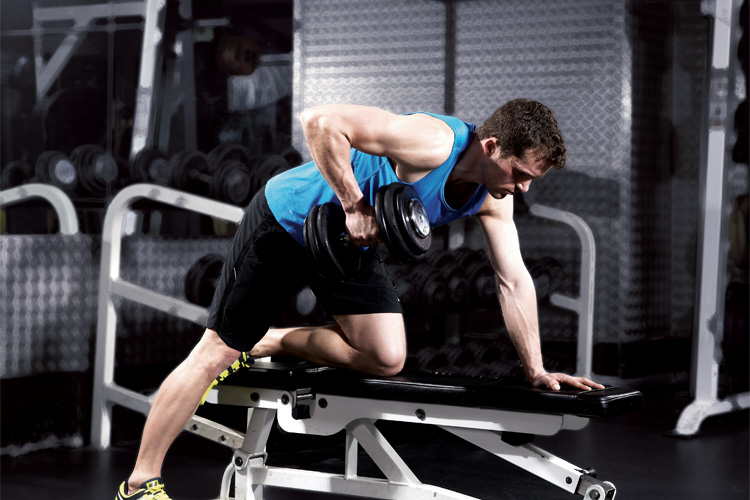Unilateral Training: Key Questions Answered
Lifting with one arm or one leg at a time is a great way to balance growth, work your core and minimise injury

What are unilateral moves?
Simply put, a unilateral exercise uses one arm or leg rather than both to move a resistance from point A to point B. One of the most popular unilateral moves is the single-arm dumbbell biceps curl. Exercises that require the use of both arms or legs are called bilateral lifts.
Why should I do them?
There are many benefits to using unilateral moves. One of the main ones is the improved isolation of a target muscle – with a unilateral exercise you’re able to focus more on the specific area of your physique that you are trying to stimulate. Your range of movement also often increases, which can allow for a better overall muscle contraction, especially during the eccentric (lowering) phase of the repetition.
Are there any other benefits?
Unilateral moves will help to build a six-pack. When you take position to perform an exercise, your core will probably be recruited to some extent to hold that position. During unilateral exercises, the core will often have to fix certain muscles in place more than if you were doing the bilateral equivalent. Such moves are also great for eliminating any strength bias on one side of your body.
Are some unilateral moves better than others?
Some exercises do lend themselves better to unilateral versions than others. For example, a flat dumbbell press performed unilaterally is very hard to stabilise, especially with a heavy weight. This makes it a poor choice of exercise. In contrast, a single-arm dumbbell row is a fantastic exercise because the body position is more stable.
When deciding whether to perform an exercise unilaterally, always consider whether the body is in a stable position – if it isn’t, the emphasis is immediately diverted from the target muscle group, which takes away some of the tension on that muscle.
Should I use free weights, bodyweight or machines to perform unilateral moves?
This is almost totally dependent on your goals. There aren’t many bodyweight exercises the average person could do unilaterally: a single-leg bodyweight squat is probably the easiest but I wouldn’t recommend it unless there’s a specific reason for it.
There are some fantastic machine exercises, such as the unilateral leg press and certain variations of the row. There are also many great free-weights exercises. Using a combination of free weights and machines for unilateral exercises is best.
Sign up for workout ideas, training advice, reviews of the latest gear and more.
Can unilateral moves build muscle and burn fat?
Of course, in the same way a bilateral movement can. It’s the application of training overall rather than a specific form of exercise that’s responsible for building muscle or burning fat – and make no mistake, it’s always a good idea to include unilateral exercises in a workout if you want to achieve these goals.
Adam Gethin is a trainer who contributed to Men’s Fitness UK, which temporarily shared a website with Coach. Adam co-authored the Men's Fitness 10 Week Body Plan with Sam Rider.
